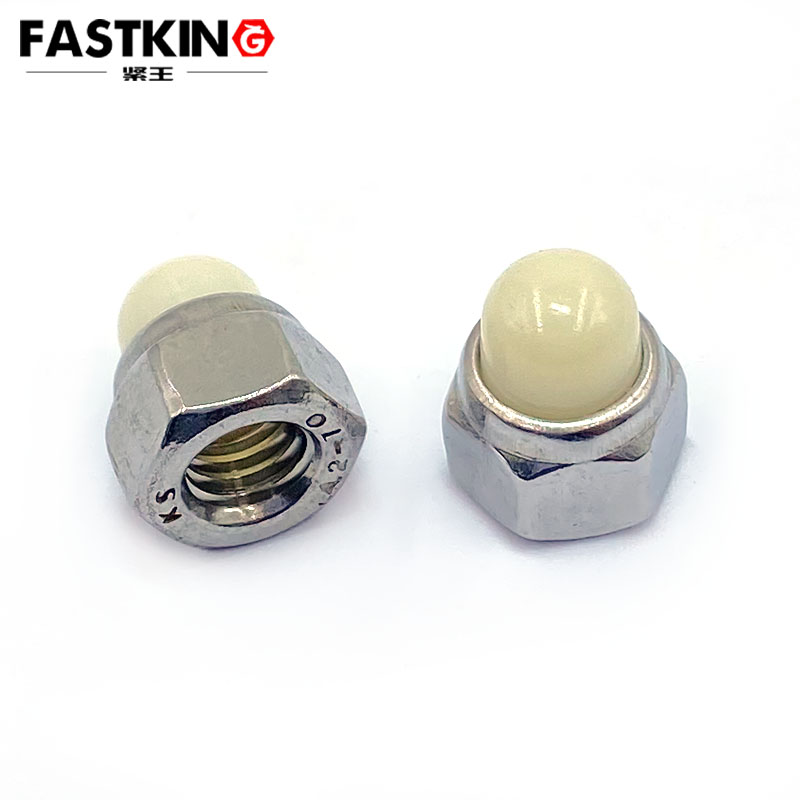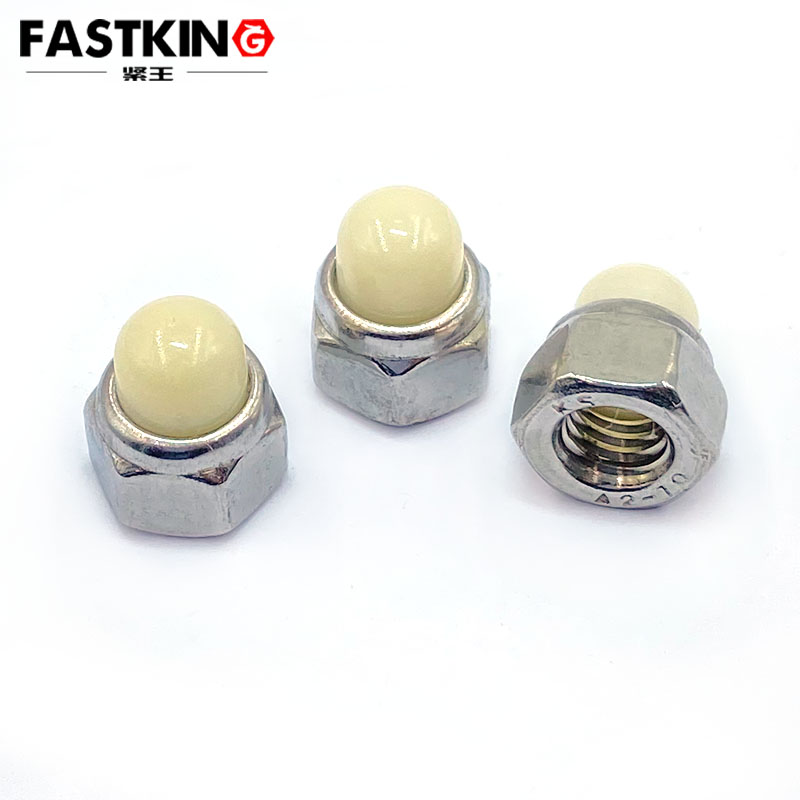I. Working Principle
The non-metallic insert hexagonal cap nut is a special type of fastener. Its core principle lies in utilizing the characteristics of the non-metallic insert to achieve locking and anti-loosening functions. This nut has a layer of non-metallic material, usually nylon or other materials with elasticity and wear resistance, embedded in its internal thread. When the nut is tightened in combination with a bolt, the non-metallic insert will form a close interference fit with the bolt thread. Since the inner diameter of the nylon insert is slightly smaller than the outer diameter of the bolt, the bolt will exert pressure on the nylon insert as it is screwed in. This causes the nylon insert to fill the gaps on the sides of the threads, thereby increasing the friction between the threads. This design not only enhances the locking performance of the nut but also strengthens the anti-loosening effect through the elastic pressure of the nylon. Even in environments with vibration or alternating loads, the nut can maintain a stable locking state.
In addition, the non-metallic insert hexagonal cap nut also has certain damping and vibration absorption capabilities. The elasticity of the nylon material can absorb some mechanical vibrations, reducing the risk of the nut loosening in vibrating environments. This characteristic makes it perform well in scenarios where noise reduction and vibration damping are required.
II. Application Scenarios
Automotive Manufacturing Field
In the automotive manufacturing industry, non-metallic insert hexagonal cap nuts are widely used in key parts such as engines and chassis. For example, when used on the bolts that fix the engine block, this type of nut can effectively prevent the nut from loosening due to engine vibrations. Its excellent anti-loosening performance ensures the stability of the engine during long-term operation. Similarly, in the suspension system of the vehicle chassis, this nut can withstand various complex loads during vehicle operation, ensuring the firm connection of chassis components.

Mechanical Manufacturing Industry
In the field of mechanical manufacturing, non-metallic insert hexagonal cap nuts are commonly used in the assembly of machine tools, industrial robots, and other equipment. For instance, in the installation of the spindle components of a machine tool, this nut can ensure the reliable fastening of the spindle during high-speed rotation and frequent start-stop processes. Its self-locking performance prevents the nut from loosening due to cutting forces and vibrations, thereby ensuring the stability of the machine tool's machining accuracy. Moreover, in the joint parts of industrial robots, this nut can withstand complex motion loads, ensuring the stability of the robot during high-precision operations.
Electronic Equipment Field
For electronic devices, non-metallic insert hexagonal cap nuts can be used to fix the device casings. For example, in the installation of the casings of large electronic devices, this nut not only provides reliable fastening but also offers some insulation due to the non-metallic insert, preventing electrical leakage. Additionally, its appearance design meets the aesthetic requirements of electronic devices, allowing it to blend well with the overall design of the equipment.

Construction Industry
In the construction field, non-metallic insert hexagonal cap nuts can be used for the connection of building structures. For example, in the connection of beams and columns in steel structure buildings, this nut can withstand large loads, and its anti-loosening performance can prevent the nut from loosening due to factors such as wind force. Furthermore, in the installation of building facades, this nut can ensure the firm connection of facade components, ensuring the aesthetics and safety of the building's appearance.
The non-metallic insert hexagonal cap nut, with its unique locking principle and wide range of applications, plays an important role in many fields. Its applications in the automotive, mechanical, electronic, and construction industries fully demonstrate its significant value in modern industry. As technology continues to advance, the performance and application scope of this type of nut will further expand, providing more reliable support for the stable operation of various industrial equipment and mechanical structures.
